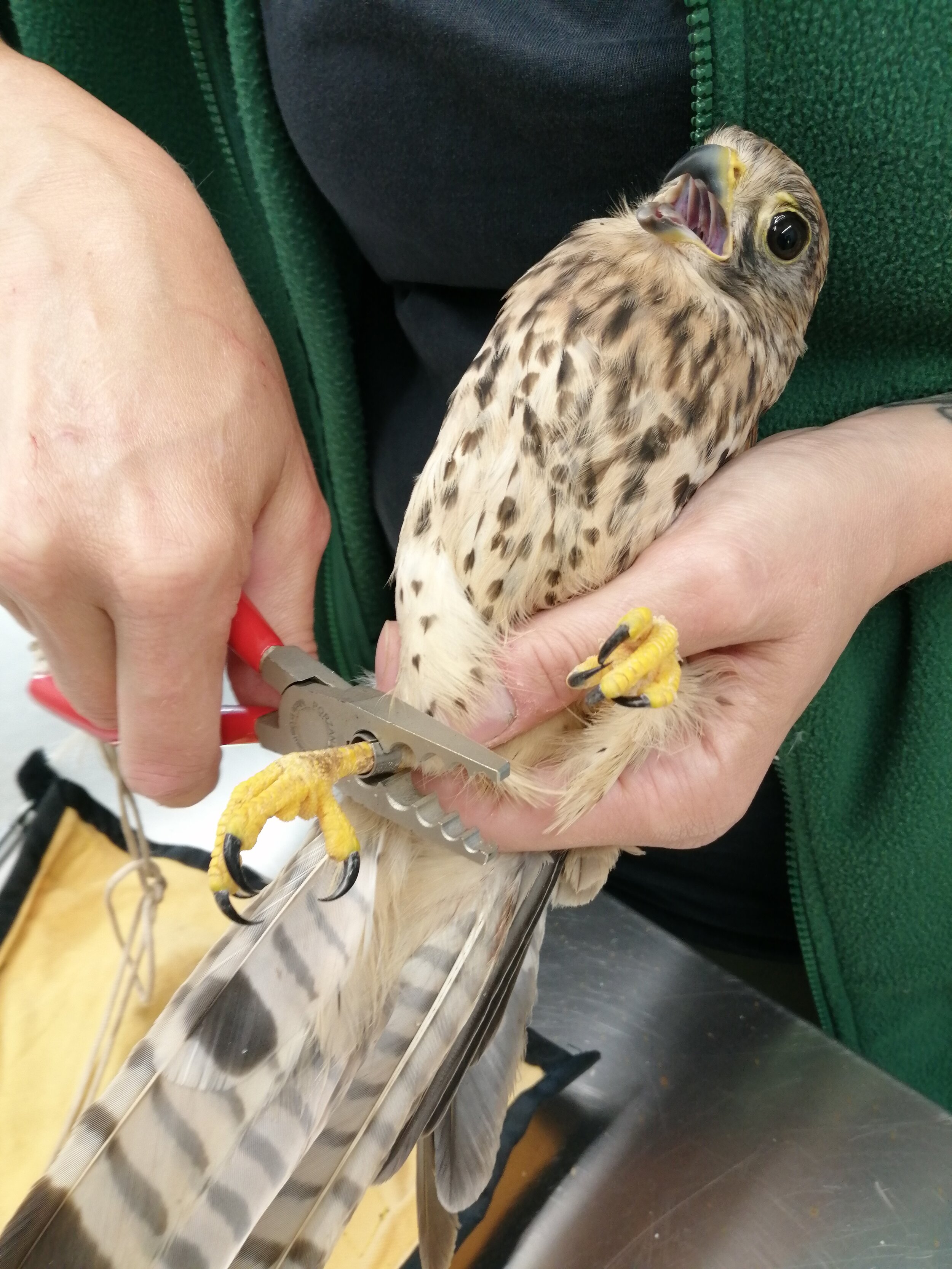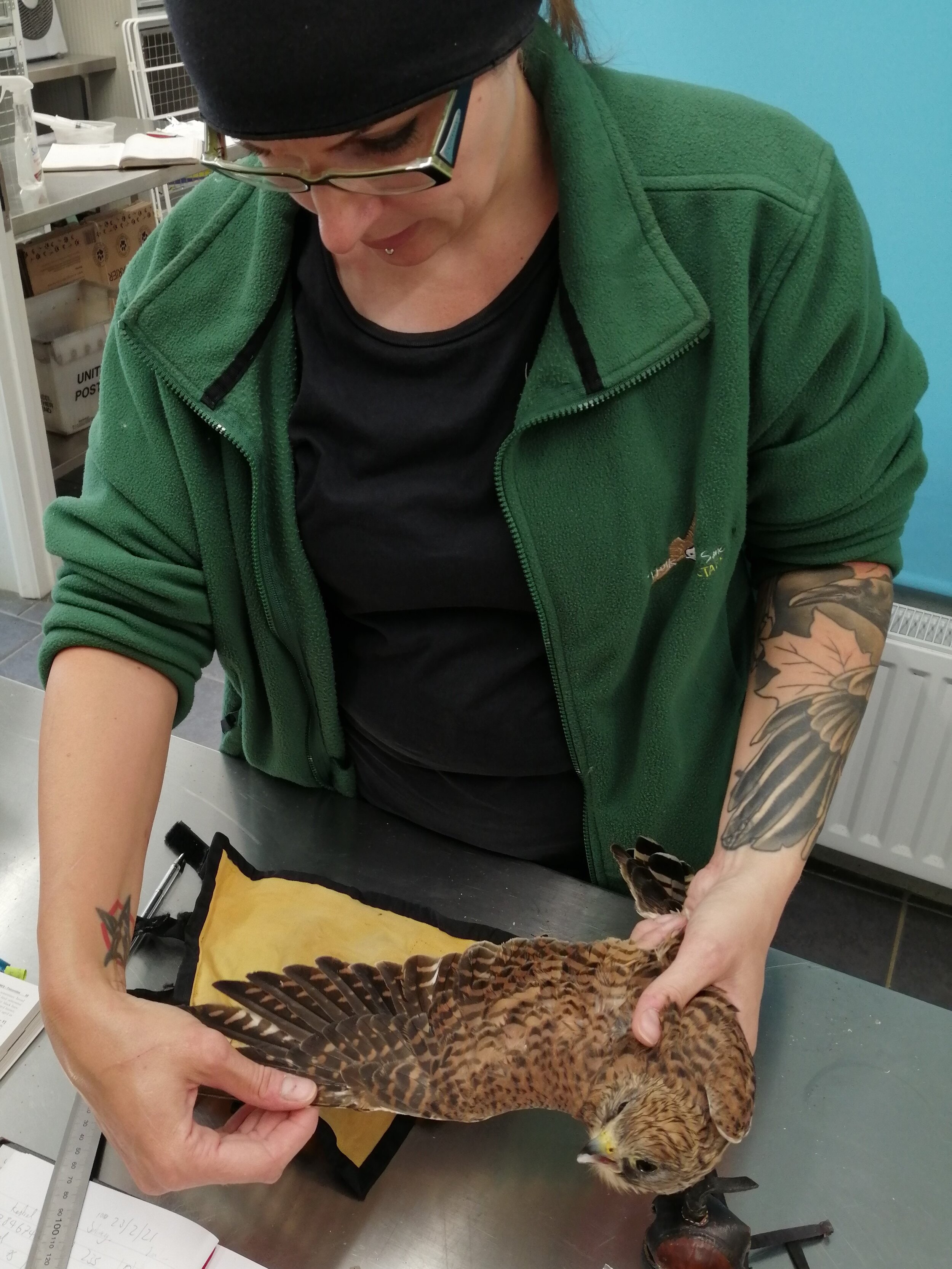Here at Suffolk Owl Sanctuary, we always put the welfare of our birds first and are proud to receive all the excellent comments and feedback from visitors saying how well looked after our birds are.
We have been working with specialist vet Elliott Simpson for a couple of years now. He not only helps to look after all of our resident birds when they require some veterinary treatment, but is also our referral specialist for any hospital cases which require a bit more avian knowledge.
As a leading avian veterinarian, Elliott was part of a working group which recently put together a Best Practice Guide for keeping Birds of Prey. In addition to feeding and housing guidelines, there is a section on handling, in particular tethering of birds.
Visitors to Suffolk Owl Sanctuary will have noticed that our weatherings have been looking a bit empty over the past couple of years. This is where traditionally all of the birds that fly during our displays would be tethered during the daytime. Each bird would have its own area to protect it from the elements, a perch to sit on and a bath to bathe in if desired. The birds would be picked up and relocated for flying displays or exercise, then returned to their perches. At the end of the day, the birds would be moved into our Mews room, which is fitted with a variety of large and roomy night boxes, where the birds are untethered overnight.
Modern practice is now moving away from this, and as such, we started free lofting many of our birds. This means that birds will live permanently inside an aviary, apart from when they are being flown. It is believed that this allows the birds to demonstrate more natural behaviours, and to have a choice as to where it sits. It also allows us to create new and interesting aviaries, with enrichment in the form of natural logs for perching at different levels and planting, which is not possible in the weatherings.
Over the winter, we will be building a new block of aviaries for the remaining display birds to move into. This will be fitted with windows and hatches for the birds to fly in and out of when it’s their time to take part in displays, something which our Owls have already mastered.
Following the move away from tethering birds at the centre, questions were raised about tethering birds and taking birds off site. Although we no longer take our birds to country shows or fairs, our Wise Owl Roadshow has always been popular with schools, youth groups and care homes who find it difficult to organise a trip to visit us.
The birds chosen for these outreach trips were specially selected because of their calm demeanours. All of these birds are hand reared, so are used to people and being handled, and our staff were trained on how to manage the birds while off site.
However, in order for us to maintain our standards of bird welfare, we have taken the difficult decision to stop taking our birds off site, as of January 2022.
We understand that this is likely to be an unpopular decision to many of our long standing supporters, particularly schools and care homes. We hope that you will all understand our reasons why, and that you can help as we raise awareness for the plight of bird welfare. Many of our supporters already understand why we don’t allow visitors to stroke our birds (due to our skin having oils which can damage their feathers).
We will use the time up to the end of the year to rebrand our outreach visits, as we hope to still be able to educate, engage and inspire people of all ages to care for Bird of Prey and the world they live in.
If you have any questions regarding this, please direct them to info@owl-help.org.uk














































































